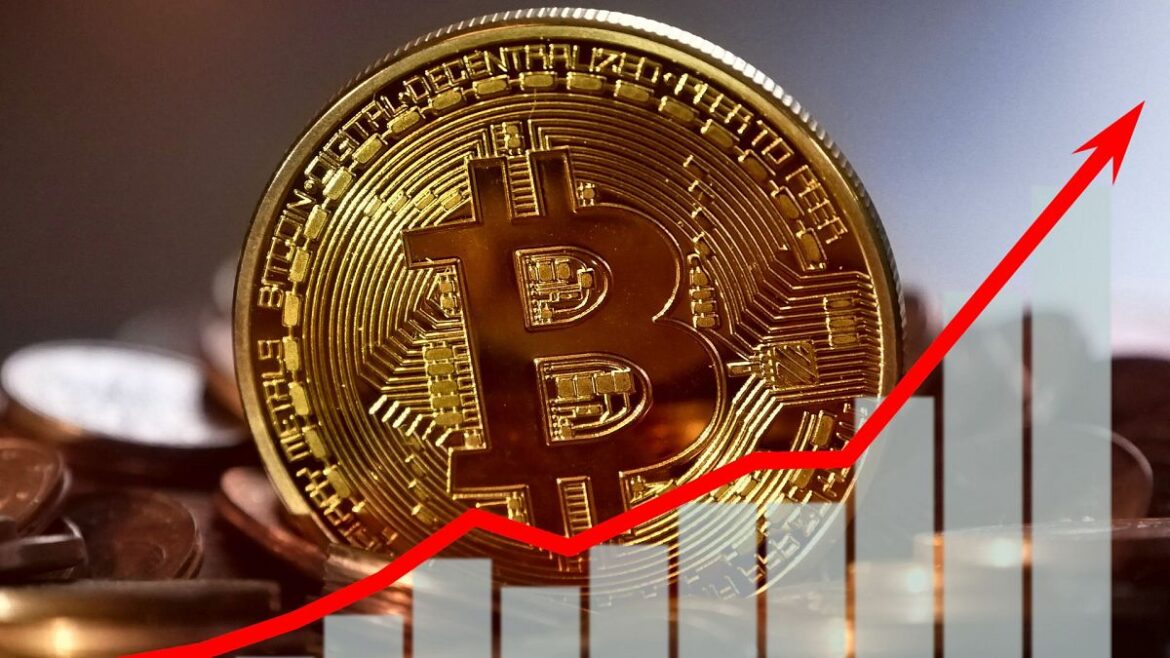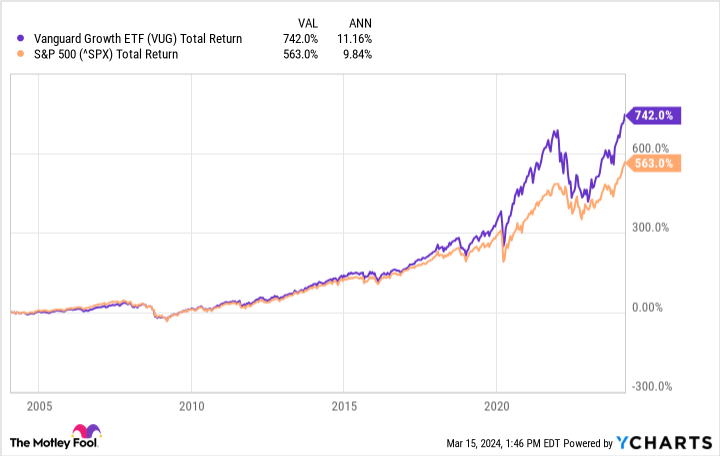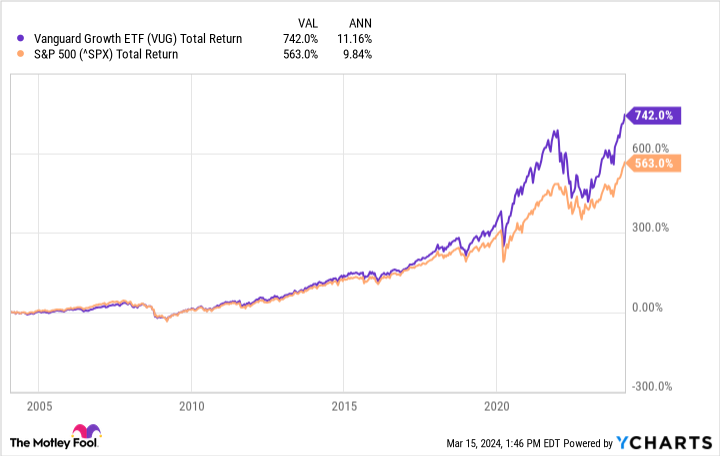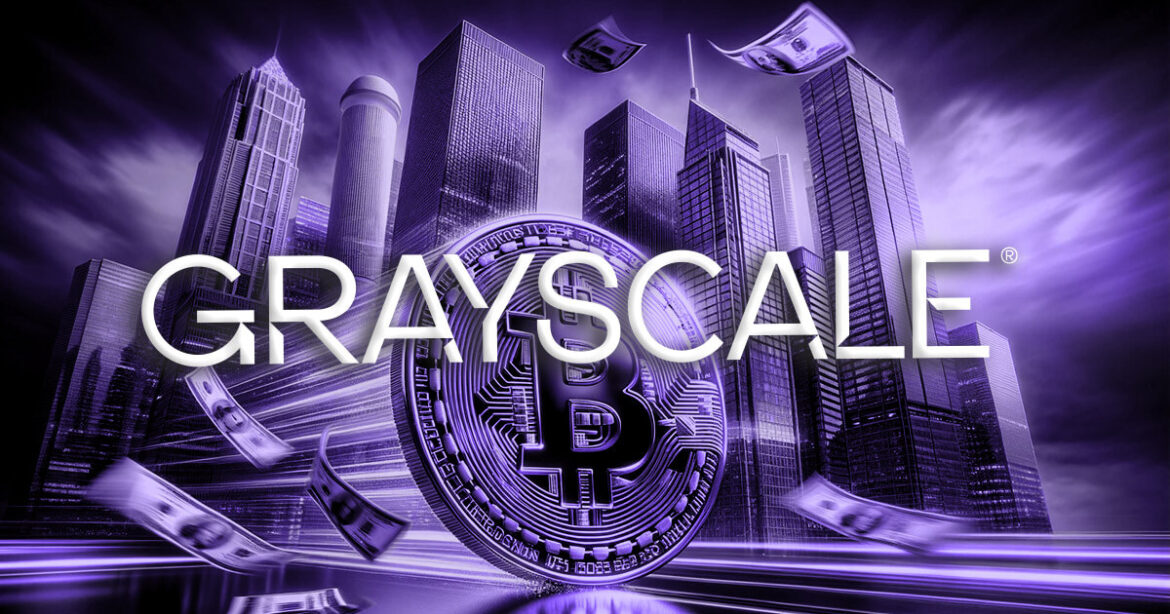 The CEO of Blackrock, the world’s largest asset manager, Larry Fink, says he is “very bullish on the long-term viability of Bitcoin.” Noting that he is “pleasantly surprised” by the demand for Blackrock’s spot bitcoin exchange-traded fund (ETF), he emphasized that the Ishares Bitcoin Trust (IBIT) is “the fastest growing ETF in the history of […]
The CEO of Blackrock, the world’s largest asset manager, Larry Fink, says he is “very bullish on the long-term viability of Bitcoin.” Noting that he is “pleasantly surprised” by the demand for Blackrock’s spot bitcoin exchange-traded fund (ETF), he emphasized that the Ishares Bitcoin Trust (IBIT) is “the fastest growing ETF in the history of […]
Source link
ETF
Fidelity files registration statement for Ethereum ETF despite regulatory uncertainty

Fidelity Investments has taken another step in its effort to launch a spot Ethereum ETF, filing a registration statement on March 27 despite the uncertain regulatory landscape.
The move follows a previous filing by Cboe, the exchange planned for this ETF, which submitted a form 19b-4 to the SEC on Fidelity’s behalf in November 2023.
Fidelity’s actions, alongside those of other firms aiming to introduce spot ether ETFs, illustrate the growing interest in integrating digital assets into traditional financial products. Yet, obtaining regulatory approval presents a notable challenge, highlighting the evolving and uncertain nature of crypto regulation.
S-1 filing
The company’s recent Form S-1 filing marks an essential step in seeking SEC approval for the Fidelity Ethereum Fund to begin trading. The regulator must approve both the 19b-4 and S-1 forms before the fund can trade,
Fidelity’s latest submission did not disclose the fund’s details, such as the ticker and fees. However, it detailed the fund’s intention to stake a portion of its assets with one or more staking infrastructure providers, anticipating that staking rewards of ether could count as income for federal income tax purposes.
Fidelity Digital Asset Services, serving as the fund custodian, will exclusively maintain the private keys associated with any staked ETH, ensuring security for the fund’s operations.
The regulator is expected to decide on ETFs that directly hold ETH by late May. However, industry experts predict the SEC may not be as open to Ethereum as Bitcoin.
Uncertain landscape
The SEC’s approval of spot Bitcoin ETFs in January led to expectations of a potential opening for other cryptocurrency-based investment products. However, the regulator said at the time that the approval did not mean the regulator had softened its stance toward the digital asset industry.
The Ethereum Foundation recently revealed it was under scrutiny by an unnamed “state authority,” triggering concerns about the impact on Ethereum’s future and the approval of related ETFs.
The inquiry has led to speculation about its implications for Ethereum’s market performance and regulatory status.
Meanwhile, Republican lawmakers are pressing the SEC for clarity on Ethereum’s regulatory classification, highlighting the need for definitive guidance to mitigate market uncertainties.
Despite this, the industry remains optimistic about the approval of Ethereum ETFs, citing previous engagements with the SEC over Bitcoin ETFs as a positive precedent.
The post Fidelity files registration statement for Ethereum ETF despite regulatory uncertainty appeared first on CryptoSlate.
Bitcoin ETF Netflows May Experience Rebound If This Price Is Attained, Analyst Explains
In line with the decline in Bitcoin’s price, the spot Bitcoin ETF market has appeared rather gloomy in recent days. According to data from analytics firm BitMEX Research, these BTC ETFs have recorded a negative netflow for the last four trading sessions.
This situation has been marked by large levels of Grayscale’s GBTC outflows and the record low inflows for the other ETFs, mainly the market leaders BlackRock’s IBIT and Fidelity’s FBTC. However, amidst these persistent declining netflows, Ki Young Ju, a prominent analyst and Chief Executive Officer at Cryptoquant, has predicted a possible resurgence in the spot Bitcoin ETF market.
Analyst Pinpoints $56,000 Level As Critical To Bitcoin ETF Recovery
In a post on X on March 22, Ki Young Ju shared that a rise in spot Bitcoin ETFs netflows could occur even as the BTC price decline continues. Using data from the historical netflow trends, the analyst noted that demand for Bitcoin ETFs usually kicks in when the cryptocurrency traces to certain support levels.
Young Ju stated that, in particular, new BTC whales, especially ETF buyers, have shown to have a $56,000 on-chain cost basis. This suggests that the new significant holders of Bitcoin, particularly those invested in ETFs, usually purchased Bitcoin at an average price of $56,000. Following this trend, the crypto quant boss believes the spot Bitcoin ETF market could experience massive inflows if BTC reached the specified price level.
#Bitcoin spot ETF netflows are slowing.
Demand may rebound if the $BTC price approaches critical support levels.
New whales, mainly ETF buyers, have a $56K on-chain cost basis. Corrections typically entail a max drawdown of around 30% in bull markets, with a max pain of $51K. pic.twitter.com/vZCG4F0Gh5
— Ki Young Ju (@ki_young_ju) March 22, 2024
For now, Bitcoin’s price has oscillated between $62,000 and $68,000, as seen in the last week. However, Young Ju believes that such a descent is quite feasible as price corrections usually see a maximum decline of 30%. Using BTC’s most recent high of $73,750, the analyst predicts the asset price could still trade as low as $51,000.
BTC Price Overview
At press time, Bitcoin continues to trade at $64,065.74, representing a decline of 3.73% and 7.17% in the last one and seven days. Meanwhile, the asset’s daily trading volume is down 3.53% and valued at $39.62 billion.
Following historical trends of the bull cycle, it is possible that BTC may have reached its price peak leading up to the halving event in April. If that is the case, Bitcoin may likely not return to previous high price levels soon and could experience further price drops in the coming weeks.
BTC trading at $64,315.00 on the hourly chart | Source: BTCUSDT chart on Tradingview
Featured image from Euronews, chart from Tradingview
Disclaimer: The article is provided for educational purposes only. It does not represent the opinions of NewsBTC on whether to buy, sell or hold any investments and naturally investing carries risks. You are advised to conduct your own research before making any investment decisions. Use information provided on this website entirely at your own risk.
When it comes to stock investing, I always tell people not to make it more complicated than it has to be. It can be exciting to invest in The Next Big Thing and hit it big on returns, but sometimes overthinking it can do more harm than good. Often, all you need to invest and receive worthwhile returns is an exchange-traded fund (ETF) that covers a lot of ground with a single investment.
One ETF that can be a staple in your portfolio is the Vanguard Growth ETF (NYSEMKT: VUG). It checks off many boxes and has provided market-beating returns. Need more convincing? Check out these three reasons the Vanguard Growth ETF is a good go-to investment.
1. The ETF is led by some of the world’s top companies
The Vanguard Growth ETF is made up of 208 stocks, but only a handful of companies lead the charge. The ETF is market-capitalization weighted, so larger companies account for more of the fund than others. Below are the ETF’s top 10 holdings:
|
Company |
Percentage of the Fund |
|---|---|
|
Microsoft |
12.84% |
|
Apple |
11.15% |
|
Nvidia |
7.75% |
|
Amazon |
6.87% |
|
Meta Platforms |
4.54% |
|
Alphabet (Class A) |
3.42% |
|
Alphabet (Class C) |
2.84% |
|
Eli Lilly |
2.69% |
|
Tesla |
2.28% |
|
Visa |
1.81% |
Source: Vanguard.
These 10 holdings account for over 56% of the fund. Typically, some investors would want a less top-heavy ETF, but in the Vanguard Growth ETF’s case, this has worked in its favor (and will likely continue to). Having some of the world’s top companies leading your ETF is likely to be a good thing.
It also helps that these are megacap stocks (companies with a market cap of over $200 billion), so they provide a bit more stability than smaller companies. The combination of the growth focus and stability is a two-for-one benefit that can suit investors looking for market-beating returns while minimizing the volatility that often comes with growth stocks.
2. The Vanguard Growth ETF has outperformed the S&P 500 since its inception
The S&P 500, which tracks 500 of the largest companies trading on the U.S. market, is a widely used benchmark. When funds and stocks evaluate their performance, it’s often against the S&P 500. That said, the Vanguard Growth ETF has come out well against the stock market’s most important index.
Since its January 2004 inception, the ETF’s total returns have far exceeded those of the S&P 500. The difference is even more impressive considering that total returns include dividends, and the Vanguard ETF’s growth focus excludes many dividend stocks.
Of course, the fund’s historical outperformance doesn’t guarantee it’ll continue to happen, but there’s a lot of overlap between the two that works in the ETF’s favor. Growth stocks are leading the market and should continue to over the long haul.
3. It’s one of the cheapest ETFs on the stock market
ETFs have expense ratios, which are fees charged as a percentage of your total invested amount. Although these fees might seem minor, a slight difference can equate to thousands of real-life dollars over time.
The Vanguard Growth ETF’s expense ratio is 0.04%, or $0.40 per $1,000 invested. For perspective, another growth-focused ETF, the ARK Innovation ETF, has an expense ratio of 0.75%. To see these fees in action, let’s imagine you invest $500 monthly and average 10% annual returns over 25 years. Below is how your investments would measure up:
|
Expense Ratio |
Amount Paid in Fees |
Investment Value After 25 Years |
|---|---|---|
|
0.04% |
$3,500 |
$586,500 |
|
0.75% |
$62,600 |
$527,400 |
Calculations by author. Values rounded down to the nearest hundred.
In this scenario, a difference of only 72 basis points in expense ratios equals about a $59,000 difference in fees paid over 25 years. The difference will vary based on returns and fees, but this example shows how even a relatively small difference can impact your long-term returns.
The No. 1 goal of investing is to make money; the next goal should be to keep as much of that money as possible for yourself. The Vanguard Growth ETF’s low fees allow you to do just that.
Should you invest $1,000 in Vanguard Index Funds – Vanguard Growth ETF right now?
Before you buy stock in Vanguard Index Funds – Vanguard Growth ETF, consider this:
The Motley Fool Stock Advisor analyst team just identified what they believe are the 10 best stocks for investors to buy now… and Vanguard Index Funds – Vanguard Growth ETF wasn’t one of them. The 10 stocks that made the cut could produce monster returns in the coming years.
Stock Advisor provides investors with an easy-to-follow blueprint for success, including guidance on building a portfolio, regular updates from analysts, and two new stock picks each month. The Stock Advisor service has more than tripled the return of S&P 500 since 2002*.
*Stock Advisor returns as of March 20, 2024
Suzanne Frey, an executive at Alphabet, is a member of The Motley Fool’s board of directors. Randi Zuckerberg, a former director of market development and spokeswoman for Facebook and sister to Meta Platforms CEO Mark Zuckerberg, is a member of The Motley Fool’s board of directors. John Mackey, former CEO of Whole Foods Market, an Amazon subsidiary, is a member of The Motley Fool’s board of directors. Stefon Walters has positions in Apple and Microsoft. The Motley Fool has positions in and recommends Alphabet, Amazon, Apple, Meta Platforms, Microsoft, Nvidia, Tesla, Vanguard Index Funds-Vanguard Growth ETF, and Visa. The Motley Fool recommends the following options: long January 2026 $395 calls on Microsoft and short January 2026 $405 calls on Microsoft. The Motley Fool has a disclosure policy.
3 Reasons to Buy the Vanguard Growth ETF Like There’s No Tomorrow was originally published by The Motley Fool
Grayscale introduces ‘mini’ Bitcoin ETF to alleviate investor tax burdens and curb outflows

Grayscale, the issuer of the world’s largest Bitcoin exchange-traded fund (ETF), has applied for a smaller version of its popular Grayscale Bitcoin Trust (GBTC) ETF under the “BTC” ticker, according to a Mar. 12 filing with the US Securities and Exchange Commission (SEC).
Grayscale said:
“This would be net-positive for existing GBTC investors, who would benefit from a lower blended fee with the same exposure to Bitcoin, spanning ownership of shares of both GBTC and BTC.”
If approved, the proposed ETF will debut a cost-effective iteration of its GBTC ETF. It will be seeded through an undisclosed percentage of GBTC, and shareholders of the current GBTC will seamlessly transition to holding shares in both GBTC and BTC, ensuring no taxable implications.
The proposed ETF will be listed on the New York Stock Exchange, operating independently from Grayscale’s GBTC fund.
Why did Grayscale file for a ‘mini’ ETF?
James Seyffart, an ETF analyst at Bloomberg, explained Grayscale’s maneuver as a savvy move to compete against rivals without compromising on fees for its profitable GBTC investment offering.
Besides that, Seyffart pointed out that the new trust could offer GBTC investors tax-free exposure to the flagship digital asset. He said:
“[The Mini ETF] definitely helps out long term GBTC holders — particularly the taxable ones who were sorta stuck with potential capital gains tax hits. Not a full solution. But way more helpful than launching a standalone product from scratch.”
Furthermore, introducing a miniature version could prevent customers from migrating to more cost-effective alternatives.
GBTC, since its inception in January, has witnessed outflows exceeding $11 billion. This trend is primarily attributed to its high fees of 1.5%, notably higher than competitors charging 0.3% or even less.
Eric Balchunas, Bloomberg senior ETF analyst, opined:
“This way, [Grayscale] can keep some of that juicy 1.5% assets while placating a bit of investors with this treat. Also, BTC then gives something competitive for their salespeople to have when talking to advisors who probably find a 1.5% fee an instant dealbreaker.”
The post Grayscale introduces ‘mini’ Bitcoin ETF to alleviate investor tax burdens and curb outflows appeared first on CryptoSlate.
In a recent appearance on CNBC’s ‘Halftime Report,’ Matt Hougan, Chief Investment Officer (CIO) of Bitwise Asset Management, shared insights into the burgeoning interest and adoption of spot Bitcoin Exchange-Traded Funds (ETFs). This discussion comes at a time when BTC has shattered expectations, reaching a new all-time high of nearly $72,500.
Bitcoin ETF ‘Floodgates’ Are Just Opening
Bob Pisani of CNBC highlighted the unprecedented influx of approximately $20 billion into the market following the mid-January launch of 10 new spot Bitcoin ETFs, including $1.3 Billion in Bitwise‘s own BITB. This move has significantly broadened the investor base for Bitcoin, attracting a diverse group ranging from retail investors and registered investment advisors to hedge funds and venture capital funds.
According to Hougan, “It’s sort of everyone everywhere all at once,” indicating a widespread and multifaceted demand for BTC exposure through these ETFs. He further revealed that “right out of the gate, the initial buyers are retail investors, registered investment advisors, but we’re also seeing hedge funds, venture capital funds, and others lining up.”
Crucially, Hougan pinpointed the near-future potential for a significant expansion in the investor base for Bitcoin ETFs. He foresees major wealth management platforms — the likes of Morgan Stanley and Wells Fargo — opening up to these ETFs, which would mark a pivotal moment in cryptocurrency investment.
“Soon, we think we’ll unlock major wealth management platforms, the Morgan Stanley‘s and Wells Fargo’s, and we’re even seeing corporations lining up to get into these funds. So a lot of the floodgates are open, not all of them,” he explained. This anticipated shift is expected to unlock “massive flows” into Bitcoin ETFs, as advisors on these platforms may soon begin recommending Bitcoin exposure to their clients.
“But we think in the next weeks or months, and it could be as soon as weeks, you’ll start to see these major wirehouses allow solicited investing into these Bitcoin ETFs means that the advisors can suggest to their clients that it might be helpful for their overall portfolio to add a small amount of Bitcoin exposure,” Hougan added.
ETF Buyers Are Long-Term Investors
Hougan’s statements underline a critical evolution in the perception and accessibility of Bitcoin as an investment vehicle. The broadening investor base, initially dominated by retail and institutional investors, is on the cusp of welcoming major wealth management platforms and their clientele into the fold.
This transition, according to Hougan, could significantly amplify the capital flowing into Bitcoin ETFs, thereby increasing BTC’s integration into mainstream investment portfolios.
Addressing concerns about the notorious volatility of BTC, Hougan argued that Bitcoin is “its own asset” currently in a phase of price discovery. He stressed the maturity of investors in this space, saying, “if you strip out GBTC…investors added exposure when the price went from $50,000 down to $39,000, and they’ve added exposure as it’s gone up to $72,000.”
This steady investment behavior, even in the face of volatility, indicates a strong belief in the long-term value of Bitcoin. “They’re just steadily adding to Bitcoin exposure and that gives me confidence that they’re here to stay. I think most of them are long-term investors in the space,” Hougan concluded.
At press time, BTC traded at $71,597.
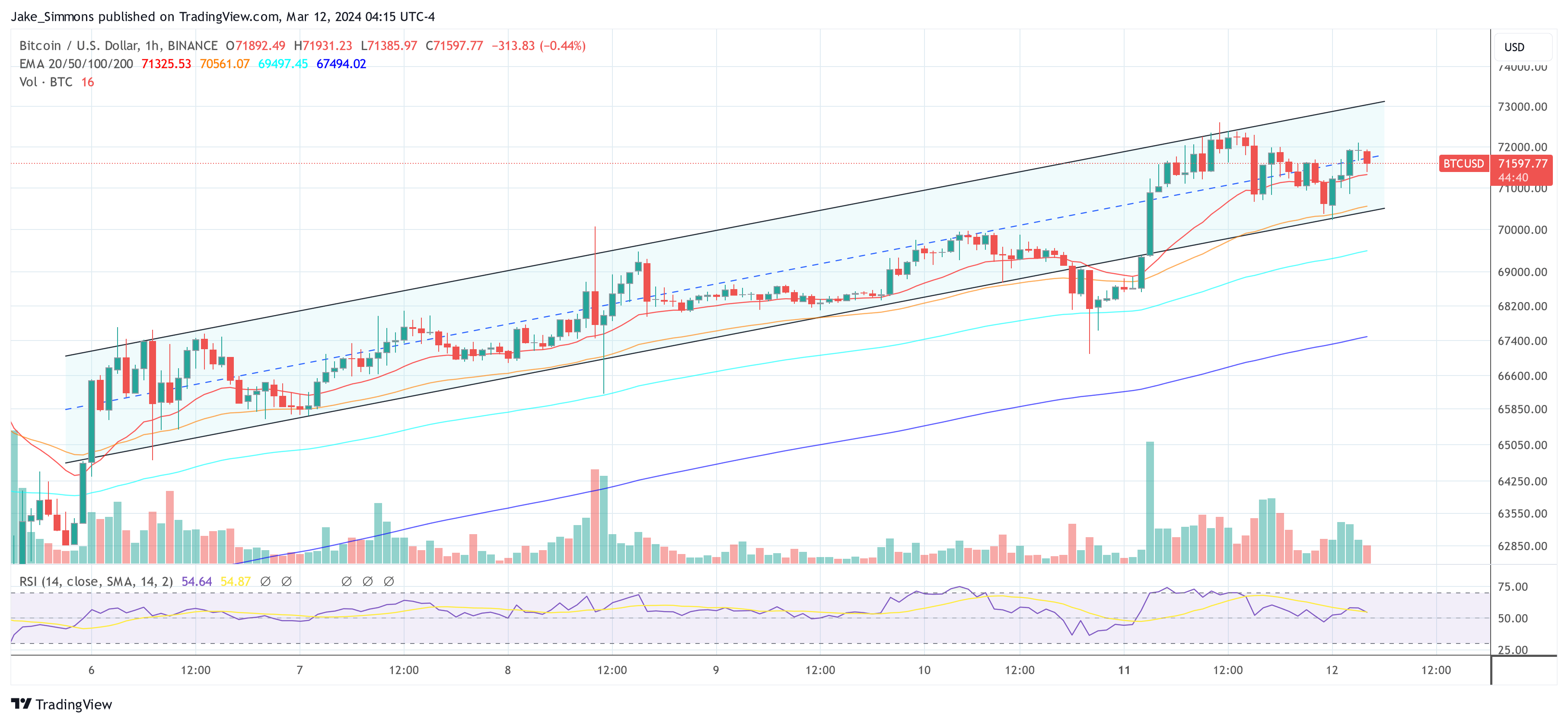
Featured image created with DALL E, chart from TradingView.com
Disclaimer: The article is provided for educational purposes only. It does not represent the opinions of NewsBTC on whether to buy, sell or hold any investments and naturally investing carries risks. You are advised to conduct your own research before making any investment decisions. Use information provided on this website entirely at your own risk.
1 Stock-Split ETF That Could Turn $200,000 Into $1 Million in 10 Years, With Nvidia’s Help
BlackRock manages $10 trillion worth of assets on behalf of its clients, making it the largest company of its kind in the world. It invests in everything from residential and commercial real estate to America’s largest technology companies in order to help its clients meet their financial goals.
BlackRock is also the parent company of iShares, which manages more than 1,400 exchange-traded funds (ETFs) designed to place a variety of asset classes at the fingertips of investors of all skill levels.
The iShares Semiconductor ETF (NASDAQ: SOXX) invests in most of the world’s top chip companies, which are at the forefront of the artificial intelligence (AI) revolution.

The iShares Semiconductor ETF just completed a stock split
The iShares Semiconductor ETF delivered a compound annual return of 30% over the last five years, soaring to $680 per share, which made it somewhat inaccessible to smaller investors. As a result, iShares executed a 3-for-1 stock split, which increased the number of shares in circulation threefold, while reducing its stock price by two-thirds.
It had no impact on the value of the ETF, but investors can now buy in for as little as $237 (as of this writing), making it accessible to a wider audience.
The momentum in the iShares Semiconductor ETF will likely continue given the sheer size of the AI opportunity. Here’s how it could turn a $200,000 investment into more than $1 million over the next 10 years — but don’t worry, investors with any amount of starting capital can benefit from a fivefold return if this scenario plays out.
The iShares Semiconductor ETF invests in the world’s top chip stocks, including Nvidia
AI wouldn’t exist without the powerful data center chips designed to help developers build, train, and deploy their models. Nvidia (NASDAQ: NVDA) is the leader in that segment by a mile, and it’s reaping substantial results from the success of its industry-leading H100 graphics processing unit (GPU).
Nvidia has a market cap of $2.3 trillion as of this writing (only Apple and Microsoft are worth more) and over $1.5 trillion of that value was added in the last 12 months alone. The powerful returns in the iShares Semiconductor ETF lately are no surprise when you consider Nvidia is its largest holding.
The ETF holds a stake in 30 semiconductor stocks, but it’s heavily weighted toward its top five positions, which account for 41.2% of the value of its entire portfolio:
|
Stock |
ETF Weighting |
|---|---|
|
1. Nvidia |
11.27% |
|
2. Advanced Micro Devices |
10.33% |
|
3. Broadcom |
8.66% |
|
4. Qualcomm |
6.21% |
|
5. Intel |
4.75% |
Data source: iShares. Portfolio weightings are as of March 6, 2024, and are subject to change.
While Nvidia dominates the market for AI data center chips today, Advanced Micro Devices (AMD) is now shipping competing hardware. Plus, AMD has an estimated 90% market share in the AI chips designed for edge computing (computers and mobile devices), which could be the industry’s next frontier.
Outside of its top five positions, the iShares Semiconductor ETF also holds Taiwan Semiconductor, which manufactures more than half of the world’s chips — including the data center GPUs designed by Nvidia and AMD. The ETF also holds Micron Technology, a leading producer of memory (DRAM) and storage (NAND) chips, which are increasingly important with the rise of AI.
SOXX could turn $200,000 into $1 million within 10 years
The iShares Semiconductor ETF has returned 60% over the past year, more than doubling the 28% return of the benchmark S&P 500 index. It’s even better than the 48% gain in the tech-heavy Nasdaq-100 index.
That outperformance isn’t an anomaly, because the iShares Semiconductor ETF delivered a compound annual return of 30% over the last five years, and 25% over the last 10 years. The S&P 500 rose 14% and 13% across those time frames, respectively.
If the iShares Semiconductor ETF were to deliver a 25% annual return over the next 10 years, it would turn an investment of $200,000 into more than $1.8 million. It’s a high bar, but Wall Street’s estimates for the financial impact of AI are measured in the trillions of dollars. With Nvidia and AMD representing such a large percentage of the ETF, continued outperformance in the coming years can’t be ruled out.
But even if the iShares Semiconductor ETF returned a more modest 15% annually on average over the next decade, it would still deliver a spectacular financial gain for investors. The below table shows how a difference in annual return would affect an initial outlay of $200,000:
|
Initial Investment |
Compound Annual Return |
Balance After 10 Years |
|---|---|---|
|
$200,000 |
15% |
$809,111 |
|
$200,000 |
20% |
$1,238,347 |
|
$200,000 |
25% |
$1,862,645 |
Calculations by author.
The iShares Semiconductor ETF is a great bet on the future of AI, and its recent stock split gives investors of all experience levels the opportunity to buy in.
Should you invest $1,000 in iShares Trust – iShares Semiconductor ETF right now?
Before you buy stock in iShares Trust – iShares Semiconductor ETF, consider this:
The Motley Fool Stock Advisor analyst team just identified what they believe are the 10 best stocks for investors to buy now… and iShares Trust – iShares Semiconductor ETF wasn’t one of them. The 10 stocks that made the cut could produce monster returns in the coming years.
Stock Advisor provides investors with an easy-to-follow blueprint for success, including guidance on building a portfolio, regular updates from analysts, and two new stock picks each month. The Stock Advisor service has more than tripled the return of S&P 500 since 2002*.
*Stock Advisor returns as of March 8, 2024
Anthony Di Pizio has no position in any of the stocks mentioned. The Motley Fool has positions in and recommends Advanced Micro Devices, Apple, Microsoft, Nvidia, Qualcomm, and Taiwan Semiconductor Manufacturing. The Motley Fool recommends Broadcom and Intel and recommends the following options: long January 2023 $57.50 calls on Intel, long January 2025 $45 calls on Intel, long January 2026 $395 calls on Microsoft, short January 2026 $405 calls on Microsoft, and short May 2024 $47 calls on Intel. The Motley Fool has a disclosure policy.
1 Stock-Split ETF That Could Turn $200,000 Into $1 Million in 10 Years, With Nvidia’s Help was originally published by The Motley Fool
Peter Schiff Predicts Bitcoin ETF Bubble — Expects BTC to Crash When Gold Breaks Out
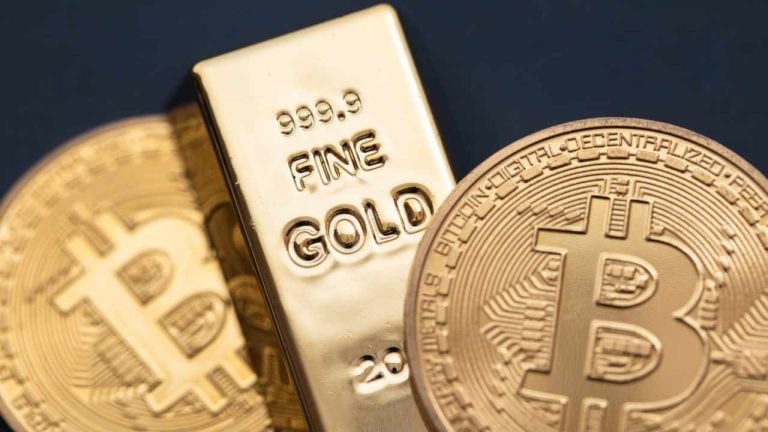 Gold advocate and vocal bitcoin critic Peter Schiff has warned of a bubble in bitcoin exchange-traded funds (ETFs) that will burst when gold rallies. Schiff argues that gold will “inevitably” break out, and the price of bitcoin will crash as investors withdraw from bitcoin ETFs. “Bitcoin has basically become a bet against gold,” he stressed. […]
Gold advocate and vocal bitcoin critic Peter Schiff has warned of a bubble in bitcoin exchange-traded funds (ETFs) that will burst when gold rallies. Schiff argues that gold will “inevitably” break out, and the price of bitcoin will crash as investors withdraw from bitcoin ETFs. “Bitcoin has basically become a bet against gold,” he stressed. […]
Source link
Ark Invest and 21Shares enhance Bitcoin ETF transparency with Chainlink integration

What is CryptoSlate Alpha?
A web3 membership designed to empower you with cutting-edge insights and knowledge, powered by Access Protocol. Learn more ›
Connected to Alpha
Welcome! 👋 You are connected to CryptoSlate Alpha. To manage your wallet connection, click the button below.
Important: You must lock a minimum of 20,000 ACS
If you don’t have enough, buy ACS on the following exchanges:
Connect via Access Protocol
Access Protocol is a web3 monetization paywall. When users stake ACS, they can access paywalled content. Learn more ›
Disclaimer: By choosing to lock your ACS tokens with CryptoSlate, you accept and recognize that you will be bound by the terms and conditions of your third-party digital wallet provider, as well as any applicable terms and conditions of the Access Foundation. CryptoSlate shall have no responsibility or liability with regard to the provision, access, use, locking, security, integrity, value, or legal status of your ACS Tokens or your digital wallet, including any losses associated with your ACS tokens. It is solely your responsibility to assume the risks associated with locking your ACS tokens with CryptoSlate. For more information, visit our terms page.



